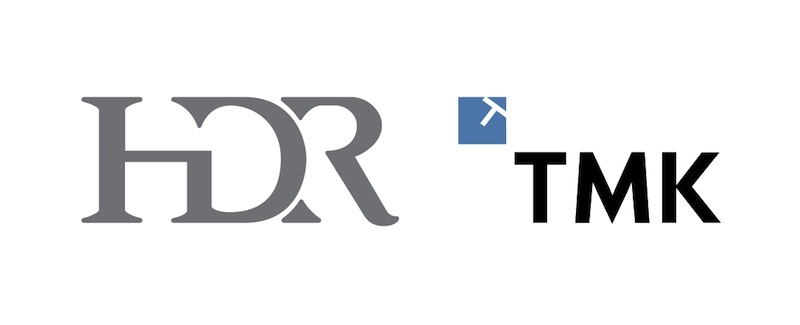TMK Architekten • Ingenieure, one of Germany’s leading healthcare architecture firms, announced today that it is joining forces with HDR Architecture, the world’s No. 1 healthcare and science + technology design firm. The merged company will conduct business as HDR TMK, and will be the hub for the firm’s healthcare and science + technology design programs in Europe.
TMK joins the HDR family with nearly 200 employees located in offices in Berlin, Dortmund, Düsseldorf, Erfurt, Kiel, and Leipzig, Germany. Since its foundation more than 50 years ago, the firm has designed more than 1,500 healthcare projects throughout Europe, ranging from large-scale replacement hospitals to community clinics, surgical centers and outpatient facilities. The firm is well-known as an innovator in designing contemporary buildings for health—buildings that are distinctively designed to focus on people and to aid in the healing process.
“This is an exciting announcement for both HDR and TMK and a key part of our global strategy,” says Doug Wignall, president of HDR Architecture. “As a firm, HDR has made a commitment not only to designing projects all over the world and bringing the best ideas from around the globe to our clients, but to establishing a permanent presence in strategic locations around the globe. We are excited about the opportunity to blend the unique perspective that TMK offers as a German healthcare practice into HDR’s global team of thought leaders from North America, the Middle East and the Pacific Rim.”
Reflecting on the merger of the practices, Guido Messthaler, a Senior Partner with TMK Architekten, notes that, “Both firms are compatible on many levels, specifically in our commitment to our clients and to design excellence.” He continues, “The merger will deepen our healthcare expertise and enable us to reach deeper in the European marketplace. And with access to HDR’s expertise and portfolio, we will also be able to further develop work in the science and technology and higher education markets.”
HDR Architecture employs more than 1,300 professionals in 44 offices worldwide, including offices in the U.S., Canada, China, Europe, the Middle East and Australia. Global acquisitions are a key part of the firm’s growth strategy; with the addition of TMK, over 20% of HDR Architecture’s employees are located outside of the United States.
About HDR Architecture
HDR Architecture is a part of the HDR, Inc. family, a global architecture, engineering and consulting firm with more than 8,000 professionals in 190 locations worldwide. The architecture practice is an industry leader in designing technologically complex buildings and infrastructure; it is ranked as the No. 1 healthcare and science + technology design firm in the “World Architecture 100” ranking. Recent projects in Europe include the new Roslin Institute Building at the University of Edinburgh in Midlothian, Scotland; the Iberian Nanotechnology Laboratory in Braga, Portugal; and multiple projects for the Pirbright Institute in Surrey, United Kingdom. In addition to the newly acquired TMK offices in Germany, HDR has a design studio in London, UK. Visit www.hdrinc.com and www.tmk-architekten.de/
Related Stories
| Jun 30, 2014
Research finds continued growth of design-build throughout United States
New research findings indicate that for the first time more than half of projects above $10 million are being completed through design-build project delivery.
| Jun 30, 2014
Narrow San Francisco lots to be developed into micro-units
As a solution to San Francisco’s density and low housing supply compared to demand, local firms Build Inc. and Macy Architecture each are to build micro-unit housing in a small parcel of land in Hayes Valley.
| Jun 30, 2014
Arup's vision of the future of rail: driverless trains, maintenance drones, and automatic freight delivery
In its Future of Rail 2050 report, Arup reveals a vision of the future of rail travel in light of trends such as urban population growth, climate change, and emerging technologies.
| Jun 30, 2014
4 design concepts that remake the urban farmer's market
The American Institute of Architects held a competition to solve the farmer's markets' biggest design dilemma: lightweight, bland canopies that although convenient, does not protect much from the elements.
| Jun 30, 2014
Harvard releases the State of the Nation’s Housing 2014
Although the housing industry saw notable increases in construction, home prices, and sales in 2013, household growth has yet to fully recover from the effects of the recession, according to a new Harvard University report.
| Jun 30, 2014
OMA's The Interlace honored as one of the world's most 'community-friendly' high-rises
The 1,040-unit apartment complex in Singapore has won the inaugural Urban Habitat award from the Council on Tall Buildings and Urban Habitat, which highlights projects that demonstrate a positive contribution to the surrounding environment.
| Jun 30, 2014
Work starts on Jean Nouvel-designed European Patent Office in the Netherlands [slideshow]
With around 80,000 sm and a budget of €205 million self-financed by the EPO, the complex will be one of the biggest office construction sites ever in the Netherlands.
| Jun 30, 2014
Growth of crowdfunding, public-private partnerships among top trends in architecture marketplace
A new report by the American Institute of Architects highlights several emerging trends in the architecture marketplace, including the growth of the P3 project delivery model and designing for health.
| Jun 30, 2014
Report recommends making infrastructure upgrades a cabinet-level priority
The ASCE estimates that $3.6 trillion must be invested by 2020 to make critically needed upgrades and expansions of national infrastructure—and avoid trillions of dollars in lost business sales, exports, disposable income, and GDP.
| Jun 30, 2014
Gen X, not Baby Boomers, spending the most money on homes [infographic]
It turns out that Generation X, who have the highest incomes of the three generations surveyed, are paying the highest home payments and tend to have the largest households.

















